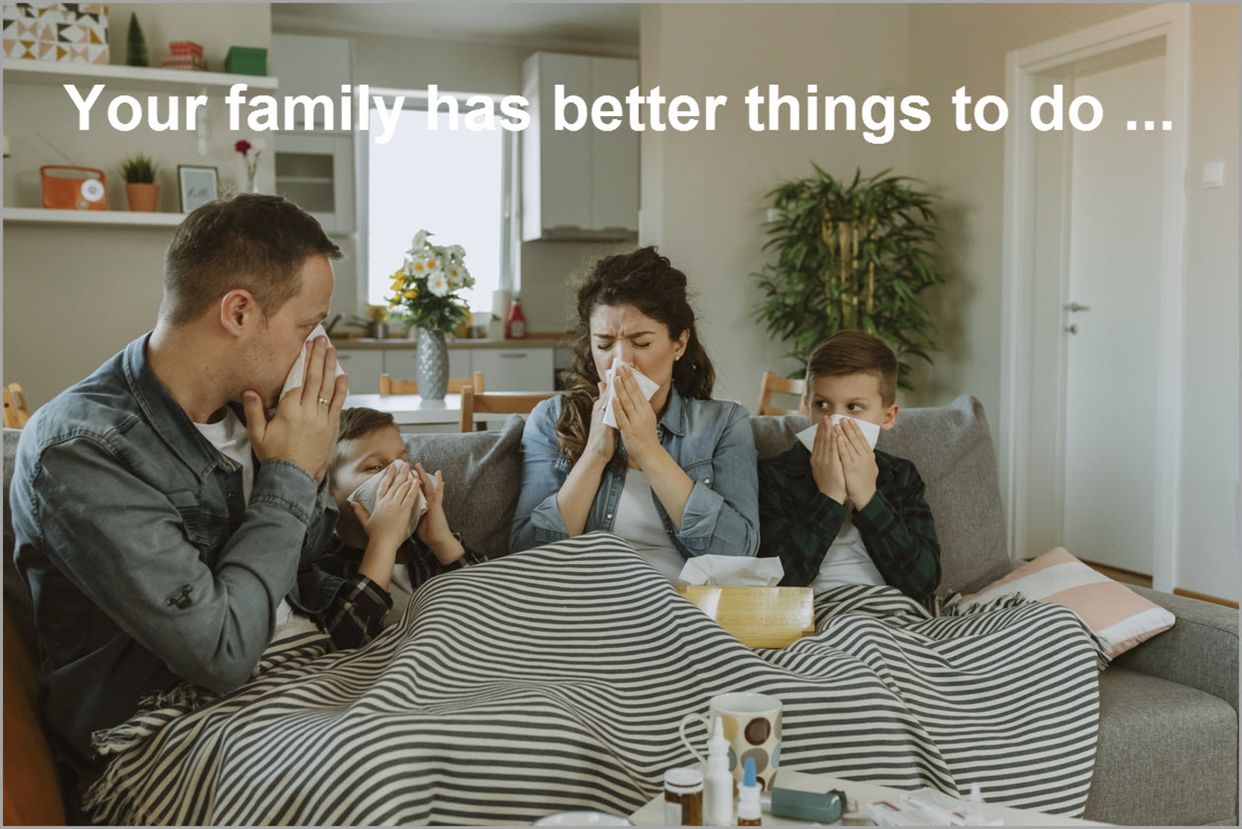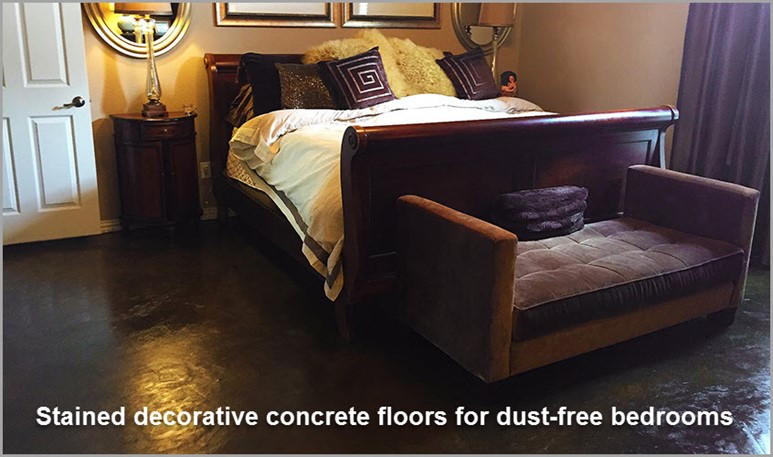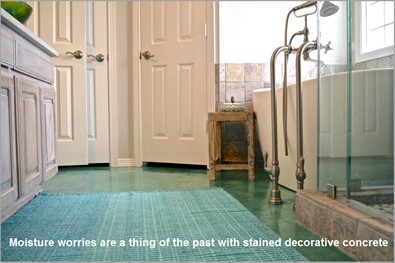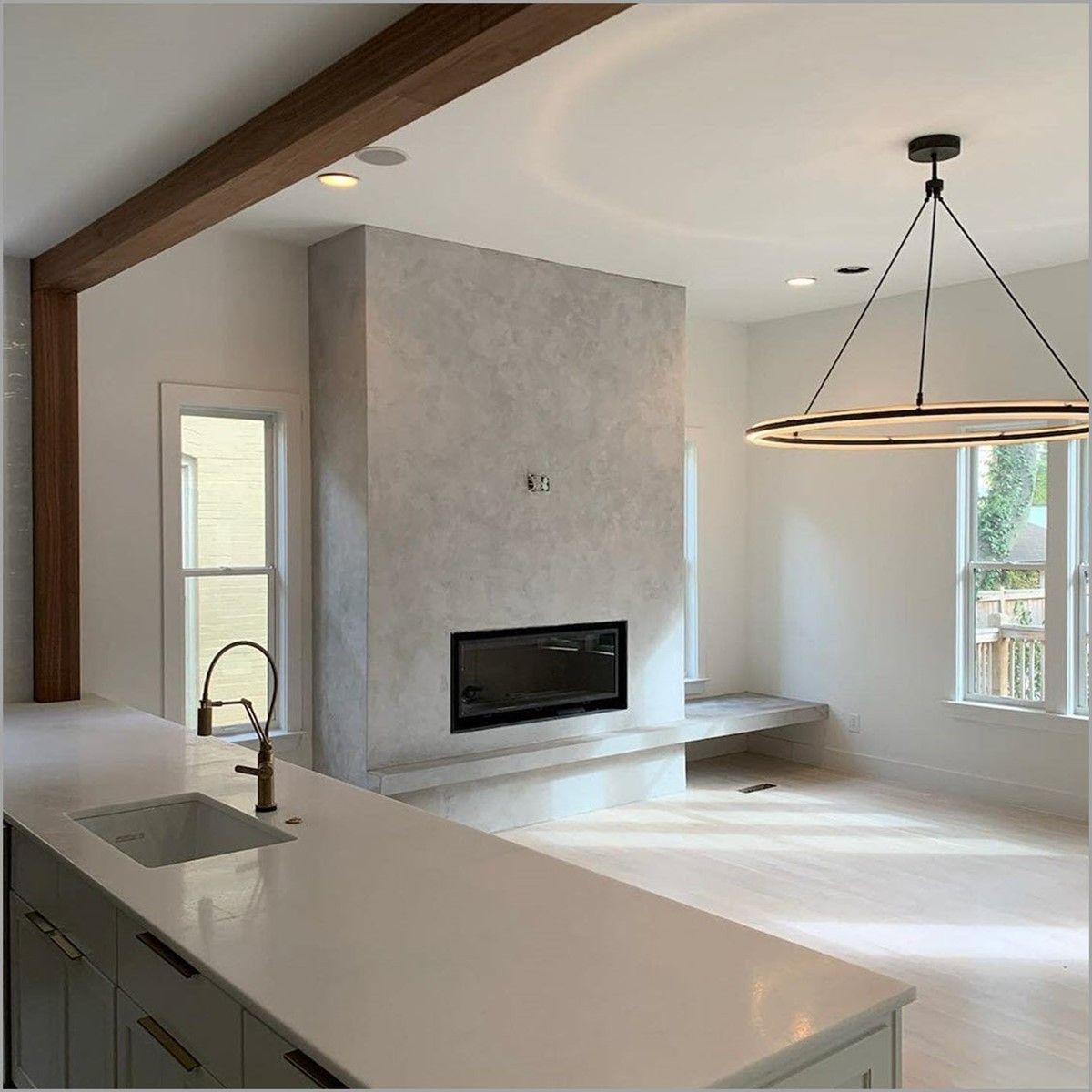An Eight-Point Checklist to Reduce Indoor Winter Allergens
If you or your family members suffer from dreaded winter allergies, you’re not alone. One in five people suffer from winter allergies and, along with sneezing, they can experience itchy eyes, runny nose, wheezing, and coughing. For someone with mild to severe allergies or asthma, this can put a real damper on wintertime fun. Concrete Craft® has a handy checklist that can help you reduce dust and other in-home allergens so your family can breathe easier all winter long.

Since house dust is the main culprit for setting off and aggravating indoor allergies, no home is immune. According to emedicinehealth.com, house dust is “an airborne mixture” of everything in your home from food to clothes and furniture to pets. This means that all the usual suspects—dust mites, mold spores, human and pet dander—are joined by fabric fibers, insect fragments, and their waste, food particles, and tracked in pollen, dust, and dirt from the outside. All this stuff can result in poor air quality and wreak havoc on allergy sufferers. But you can fight back and enjoy a cleaner environment by following this eight-point checklist for a more allergen-free home.
One: Invite in fresh air whenever possible
If you never exchange the air inside your home for fresh air, it can get stale and contribute to allergy flareups. When the weather permits, open windows, and doors for a bit of fresh air! It only takes 15 or 20 minutes to make a big difference in your indoor air quality. Running the main exhaust fan while you’ve opened up for freshness will help to pull out the stale air.
Two: Regular dusting and vacuuming
Dust collects in obvious and not so obvious places and removing it is your first line of defense. The obvious are floors, countertops, bookshelves, and tables. Not so obvious are windowsills, door frames, walls, corners, and ceilings where dust and cobwebs can accumulate. Physically remove the dust and you remove a big part of the problem
- Use a dust mop that lets you get behind and under furniture to keep your hard-surface floors free of debris and hidden dust bunnies.
- Dust or Swiffer walls up to the ceiling, including in the corners, along the baseboards, and the tops of door frames.
- Dust tabletops, shelves, books, picture frames, and knickknacks.
- Vacuum or dust blinds and shutters once a week to eliminate dust buildup.
Three: Keep soft surfaces dust-free
It’s easy to see collected dust on flat and hard surfaces, but fabric surfaces can also harbor a lot of invisible dust. This includes carpeting, furniture, curtains and drapes, tapestries, blankets, and decorative pillows.
- Replace dust-grabbing fabric window coverings with wood, vinyl, and faux wood window blinds and shutters that are easier to keep dust-free.
- If you must have curtains or drapes, choose washable fabrics so you can keep them clean, and vacuum non-washable drapes regularly.
- Upholstered furniture and cushions should be vacuumed, and pillows and blankets can be “dusted” by a 20-minute, non-heat dryer tumble with a spritz of Febreze or a dryer sheet.
- Vacuum carpet at least once a week with a HEPA filter for maximum removal of allergens or double bag your vacuum. Carpet and padding can harbor high levels of dust mites, pet dander, mold, and mildew.

Four: Keep pets and their areas clean
Pets are an important part of family life and along with all the unconditional love they bring, there is also pet dander, shedding, sloppy kisses, and potty accidents. While most people are not allergic to animal fur, allergies are aggravated by a protein found in pet dander, saliva, and urine, so keeping up with the fur babies is critical.
- Brush and groom pets outside or in the garage to reduce hair and pet dander in the house.
- Bathe pets as necessary, including cats who generally groom themselves but may need an occasional bath. Check out Tips for Bathing a Dog at Home from preventivevet.com for a comprehensive guide.
- Keep all pet bedding clean. Washable pet bed covers, designated snuggle blankets, and even toys can be machine washed to reduce their contribution to in-home allergens.
Five: Make bedrooms allergen-free zones
Bedrooms can often harbor more dust mites than any other room between carpeting, window curtains, bedding, pillows, rugs, and clothes. If allergies are serious, reducing allergens in the bedroom is necessary to help sufferers get a better night’s sleep. Along with regular cleaning regimens, here are additional safeguards for a safer environment.
- Protect mattresses, box springs, and pillows with washable, allergy-proof removable covers. (Check Allergy Guard Direct for 100% cotton covers.)
- Make bedrooms pet-free zones to eliminate pet dander as an allergy trigger.
- Replace carpeting with hard-surface flooring and use washable throw rugs where softness is needed for comfort.
- Don’t let dirty clothes pile up, wash clothes and bedding every week.

Six: Replace HVAC filters often and use high rated filters
Your HVAC may be your best friend when the heat’s on, but it can also be sending dust, mold spores, and insect parts into the air. As it recirculates the air in your home, you want that air to be as clean as possible to prevent allergy flare-ups.
- Replace air filters every three months, or as recommended for your heating and cooling system.
- Use filters with a high range MERV rating (12-13) for the best filtration or electrostatic filters with charged fibers to trap allergens.
- Clean the air of pollens, dust, mold spores, and smoke (cigarettes, fireplaces, cooking odors) by using an air purification system with HEPA filters that remove at least 99.97% of 0.3 micrometers airborne pollutants.
- Consider air duct cleaning, especially if your system is several years old. A professional cleaning will ensure you have cleaner air and better efficiency from your HVAC system.
Seven: Don’t let mold take hold anywhere
Mold and moisture go hand in hand, so controlling moisture will help eliminate the threat of mold in your home. Be vigilant about drying off surfaces where water collects, like shower walls and around bathtubs and kitchen sinks. Be on the lookout for possible mildew and mold spots in every nook and cranny of your home and use these suggestions to proactively combat mold.
- Keep indoor humidity low, between 30% and 50%, and invest in a dehumidifier to remove excess moisture from the air, and don’t overlook a damp basement.
- Ventilate windowless rooms (including attics) with exhaust fans that circulate to the outside.
- Ensure that bathroom fans are working to clear steam.
- Check for leaks under sinks and cabinets.

Eight: Invest in allergen-free, easy-care decorative concrete flooring
A great start to a more allergen-free home is decorative concrete interior floors. The sealed surface repels dust and dirt buildup and the moisture-resistant finish repels spills and stains of all kinds and inhibits the growth of mold and mildew in rooms where moisture can be a problem. Contact us or go to www.concretecraft.com to find the Concrete Craft location nearest you and request a free in-home or virtual* consultation to learn more about how decorative concrete can enhance your home with beauty, value, and safety. Begin to see the possibilities with our online Interior Design Guide.
*Virtual consultations may not be available at all locations.

